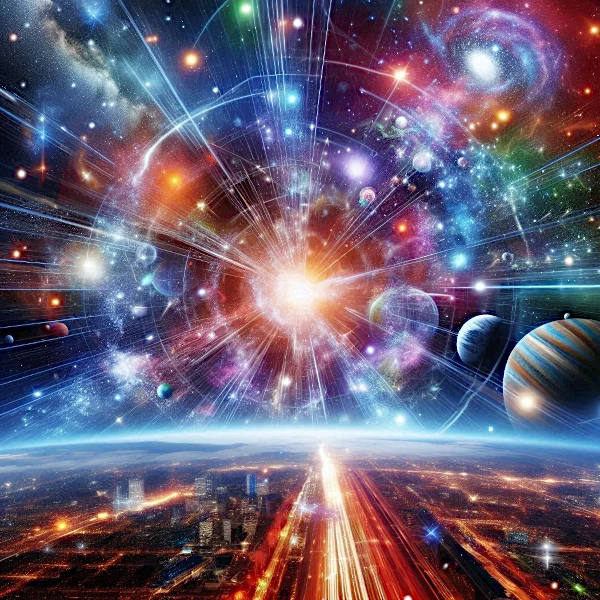
Image description: Visualization of the expansion of the Universe since the Big Bang. Image source: Astronoo AI.
The age of the Universe is estimated to be 13.8 billion years, based on observations and physical theories that allow us to estimate the "cosmological age." This estimate comes mainly from the understanding of the laws of physics, the properties of the Universe's expansion, and the cosmic background radiation.
The Big Bang cosmological model suggests that the Universe began in an extremely dense and hot state about 13.8 billion years ago. The evolution of the Universe since that moment, particularly its expansion, is described by Einstein's general relativity equations.
The observation of the redshift of distant galaxies indicates that the Universe is expanding. This expansion allows us to trace back to the time when these galaxies were concentrated in a single point, marking the Universe's beginning.
The CMB, emitted about 380,000 years after the Big Bang, provides information about the state of the early Universe. Precise measurements of the CMB help constrain cosmological parameters and calculate the age of the Universe.
The ΛCDM model describes the Universe's evolution based on matter, dark energy, and general relativity. Using observations such as the redshift of galaxies, the distribution of matter in the Universe, and the CMB, cosmologists can calculate the age of the Universe with high precision.
The space-time of our Universe is a dynamic solution to the general relativity equation. It is an expanding solution, where the properties of space-time vary over time based on the evolution of matter and energy density.